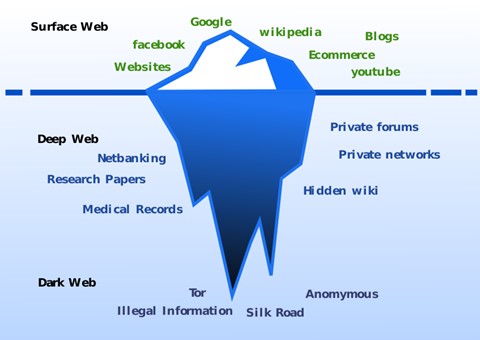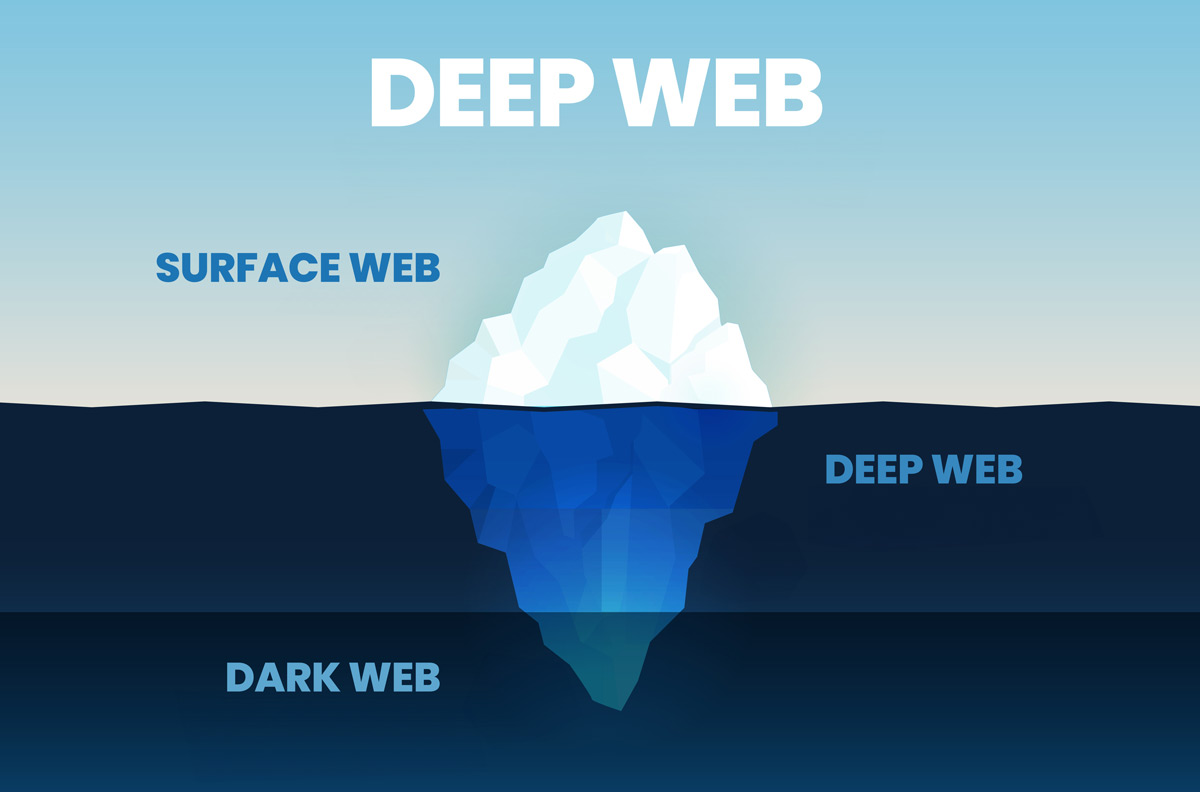Dangers Lurking on the Dark Web: Why You Should Stay Away
Table of Contents
The internet is a huge collection of information with two main parts: the surface web, which is easy to access and where regular online activities happen, and the mysterious deep and dark web, hidden and full of fascination. This article will explore the details of these hidden parts of the internet, uncovering the dynamics that make them what they are.

Surface Web
The surface web refers to the accessible portion of the internet that can be explored using conventional search engines such as
- Searchable Content: Surface web is accessible via search engines. Information on this internet section is readily discoverable through search queries, enabling users to find a wealth of information with just a basic keyword search.
- Publicly Accessible Websites: Surface web websites are created for the public and cover a broad range of content, such as news, blogs, online stores, educational materials, and more, all available to a global audience.
- Interactive and Dynamic: The surface web contains dynamic and interactive content that adapts to user actions. This includes social media, forums, and various web apps, making the online space lively and responsive.
The surface web encompasses websites that are indexed and easily accessible to the public. This includes a wide range of platforms, from social media sites to news websites, representing the internet that most users engage in their daily online activities. Although the surface web is made up of many of the most popular .com, .net, and .org sites, it’s estimated that it represents only around 5% of the total content available on the internet, with the rest being found on the deep web or dark web. In a classic example, the surface web can be imagined as the tip of a large iceberg whose bulk remains hidden just under the surface.
Listed below are a few search engines used to access the surface web;
The deep web
The deep web refers to the part of the internet that is not indexed by standard search engines. It includes content that is behind paywalls, password-protected databases, private emails, and other materials that are not meant for public consumption. The deep web dwarfs the surface web, constituting around 90% of all websites. However, it’s essential to note that not all content in the deep web is inherently secretive or illegal, a few examples are listed below.
- Databases: Collections of files, whether publicly or privately safeguarded, exist independently without direct links to other sections of the internet. These collections can only be explored within their respective databases and are not searchable through external connections.
- Intranets: Intra-organizational networks designed for enterprises, governments, and educational institutions serve as private channels for internal communication and the management of various aspects exclusive to their respective organizations.
- Password-Protected Websites: Information that is accessible only behind login pages or protected by passwords is commonly referred to as being part of the deep web. This category encompasses a wide range of content, such as personal email accounts, online banking platforms, and other secure services.
- Dynamic Pages: Websites that change their content based on what users do, like when you search or fill out a form, are usually not shown in search engine results.
In the obscure realms of the web, one encounters more perilous content and activities. The “dark web,” situated at the distant extreme of the deep web, consists of Tor websites accessible exclusively through anonymous browsers. Most of the content on the deep web is legal and benign, while some activities require privacy and security, like confidential research, personal email, and financial transactions.
The dark web
The term “dark web” pertains to websites that remain unindexed and can only be reached through specialized web browsers. In comparison to the relatively small surface web, the dark web is recognized as a subset of the deep web. If we draw an analogy with an iceberg, the dark web would be analogous to the submerged tip at the bottom of the iceberg.
The Dark Web is primarily used to conceal illegal activities. Dark Web marketplaces offer the sale of stolen data and credentials, firearms, drugs, and illegal services. The Dark Web is also where cybercriminal gangs commonly congregate and plan their attacks. This also makes it a valuable source of information regarding emerging cybersecurity risks and data breaches.
- Surface web search engines like Google and other commonly used tools are incapable of indexing or presenting results for pages within the dark web.
- Traditional browsers cannot access it because of its distinct registry operator, and it remains even more concealed through a variety of network security measures such as firewalls and encryption.
Types of cybercriminal activities handled on the dark web
- Botnets
- Ransomware
- Darknet markets
- Bitcoin services
- Hacking groups and services
- Financing and fraud
- Terrorism
Why you should not explore the dark web without proper knowledge?
Illicit Activities:
The dark web has gained notoriety for being a platform where illicit activities, including but not limited to drug trafficking, weapons trade, hacking services, and various forms of cybercrime, thrive. Participation in such activities can result in severe legal repercussions.
Law Enforcement Monitoring:
International and local law enforcement agencies closely monitor the dark web for illegal activities. People involved in unlawful transactions or discussions might get into trouble with authorities if they get caught.
Malware and Scams:
The dark web is a hub for different kinds of malware, scams, and phishing schemes. Users might unintentionally download harmful software or become targets of scams, putting their personal information at risk.
Identity Theft:
The dark web serves as a marketplace where stolen personal information, such as credit card details, social security numbers, and login credentials, is traded. If users’ information is purchased and misused, they could fall prey to identity theft.
Financial Risks:
On the dark web, transactions commonly use cryptocurrencies. Users could encounter financial dangers, like scams or losing money because these transactions are usually irreversible.

